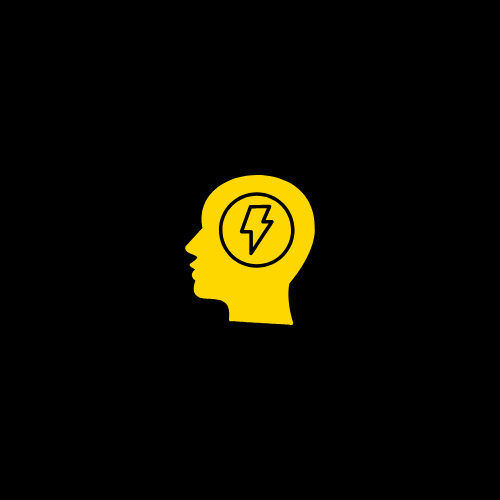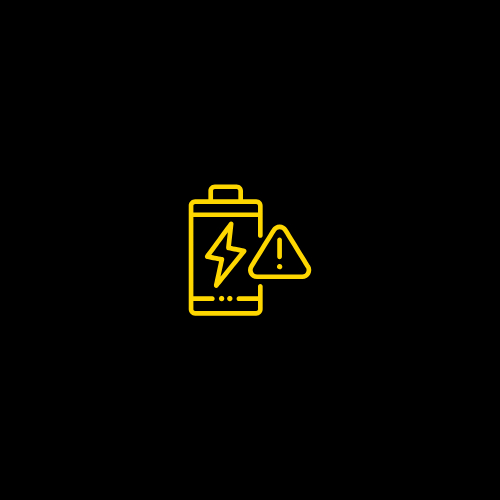Have you ever found yourself skipping the rest you need, only to end up more drained?
I used to fall into the trap of filling my downtime with anything but true relaxation whether it was playing mini hoops with my brother or getting caught up in mindless distractions.
But when I realized I was avoiding rest time in favor of ‘activity,’ the effects were clear: I felt more tired, not rejuvenated.
Most people don’t have a productivity problem. They have a rest problem. They either don’t allow themselves to take breaks, or when they do, they rest in ways that don’t actually recharge them.
If you’re ready to stop sabotaging your own rest and learn how to recharge with intention, keep reading.”
In this article, I’ll break down: The science behind effective rest (and why most breaks don’t work), How top performers rest with purpose and actionable strategies to help you recharge without guilt
By the end, you’ll know exactly how to rest in a way that fuels your energy, creativity, and long-term success.
The Myth of Constant Productivity
In today’s society, hustle culture often champions the idea that success is synonymous with non-stop work.
We are told that the harder we push, the more we achieve. This mindset creates a cycle where we sacrifice rest and recovery in favor of working harder and longer.
However, this myth of constant productivity can be counterproductive.
The law of polarity teaches us that everything in life has its opposite; light and dark, action and rest, success and failure.
Without balance, neither side can exist in its full capacity.
Just as the sun must set for the moon to rise, our bodies and minds need periods of rest to recharge and perform at their best.
Constant productivity, without time to reset, leads to exhaustion, burnout, and a decrease in the quality of our work.
When we neglect rest, we don’t just miss out on the benefits of relaxation; we also hinder our ability to truly perform at our peak.
The truth is, strategic rest is essential for maintaining high performance and avoiding burnout. It’s not about resting when you’re tired; it’s about planning rest and recovery into your routine to enhance your focus, creativity, and decision-making.
When you rest with purpose, you’re not stepping away from your goals, you’re refueling your body and mind to pursue those goals with greater intensity and clarity.
Why Rest Matters for High Performance
It’s easy to think that the most successful people are always hustling and grinding, but the reality is often the opposite.
Many of the world’s most accomplished individuals understand the importance of balancing work, rest, and downtime.
Here’s how some of the biggest names in business and entrepreneurship manage their time and recharge to maintain peak performance:
Elon Musk is known for his crazy schedule, but he still finds time for deep thinking. He’s a huge believer in stepping away from the grind to reflect and recharge. Musk makes room for family time and plays video games to unwind.
Warren Buffett spends about 80% of his time reading, thinking, and relaxing. For Buffett, this slower pace is what keeps him ahead. The key is quality over quantity when it comes to time spent working.
Bill Gates takes things a step further with his “Think Weeks”, isolating himself for several days to read and think deeply.
Jeff Bezos prioritizes his sleep—8 hours a night—and makes sure to have time in the morning to think freely. He calls this his “puttering time” a quiet, unstructured part of his day where he can relax, let ideas flow, and mentally prepare.
Naval Ravikant is a big fan of working in short, intense bursts followed by guilt-free rest. He believes in taking time off to recharge without feeling like you should always be hustling.
The Science of Rest
While hustle culture tells us that constant work equals success, science tells a different story.
Breaks aren’t just a way to waste time, they are a vital part of the equation that fuels high performance.
The mind and body are designed to operate in cycles, with periods of work followed by moments of rest to allow for recovery and optimal performance.
Creativity flourishes during rest.
When we step away from a problem, our minds continue to process the information in the background, leading to breakthroughs.
Studies show that taking short breaks improves decision-making, enhances problem-solving, and even boosts energy levels. Rest helps us sharpen our focus and increase our output.
Just as a hammer cannot pound without an anvil, our work cannot be sustained without proper rest.
In fact, it’s the contrast between work and rest that allows both to reach their highest potential.
Burnout vs. Sustainable Success
The hustle mentality encourages us to push past our limits, but it doesn’t take long before the body and mind begin to break down.
The law of diminishing returns applies here: the more we grind without rest, the less we get in return.
What starts as a burst of productivity and we might see results from working longer hours or sacrificing sleep, but over time, eventually leads to fatigue, burnout, and a drastic decline in the quality of our work.
In the same way that a car’s engine overheats when it’s run too hard, our brains begin to shut down when overworked.
The result isn’t more work, it’s less.
Without strategic rest, the very goals we are striving toward slip further away as we struggle to maintain momentum.
True, sustainable success comes from knowing when to push forward and when to step back and recharge.
To achieve true high performance, rest must be part of the equation.
Are You Truly Recharging?
Rest isn’t just about stopping; it’s about how you stop.
The difference between feeling recharged and feeling drained often comes down to the type of rest you choose. Most people don’t think about it, they just default to whatever feels easiest.
But not all rest is created equal.
Passive Rest: The Illusion of Recovery
You know those moments when you’re on the couch, scrolling through Instagram for hours, or zoning out to Netflix?
It might feel like you’re resting, but that kind of passive downtime isn’t exactly recharging your batteries.
In fact, it can leave you feeling more tired and sluggish, like you’ve just wasted time without actually resetting.
Passive rest is the kind of break that doesn’t ask much of you.
It’s easy and effortless, but it doesn’t actually do much for your mental or physical energy.
Your mind stays in a state of distraction, your attention is fragmented, and your body remains idle.
Sure, you get a momentary escape from your responsibilities, but after an hour or two of mindless scrolling or binge-watching, how do you feel?
After a few hours of this, you might feel like you’ve been “resting,” but deep down, you’re still drained. Why? Because your brain is still in “consume” mode, instead of recharging.
Passive rest doesn’t allow your brain to fully disconnect and recharge; it’s just a momentary distraction from your thoughts, not a true reset.
Avoidant Activity: Keeping Busy to Escape Rest
Then there’s the trap of avoidant activity; staying in motion just to avoid stillness.
Maybe you shoot hoops with your brother instead of unwinding, or keep jumping from task to task to avoid the discomfort of slowing down.
It feels productive, but it’s actually a way of dodging real rest. This kind of “fake productivity” wears you down even more because you’re burning energy without actually recharging.
This trap can be subtle, and it’s easy to mistake it for being productive.
You might think, “I’m getting things done,” or “I’m staying active, so I’m improving,” but all that really happens is you’re running on a hamster wheel, keeping yourself busy but never truly resetting.
Avoidant activity is rooted in a fear of stillness, the discomfort of being alone with your thoughts or facing the stillness of your mind.
It’s easier to stay in constant motion, filling the gaps with noise or distractions rather than allowing yourself to pause and process what’s really going on inside.
You’re constantly operating at a deficit, trying to catch up, but the cycle never ends.
What you need isn’t more motion, it’s the courage to slow down.
Active Rest: The Reset Button
Active rest, on the other hand, is the kind of break that actually heals you.
This is the kind of rest that goes beyond simply “passing the time.” When you engage in something like a walk, a hobby, meditation, or even a deep conversation, you’re doing more than just escaping.
You’re connecting with yourself, grounding your thoughts, and giving your mind the space to rest in a way that’s meaningful.
It’s not always effortless—it requires presence, attention, and action—but the payoff is massive.
You know that moment when you’ve been stuck in your head for too long, staring at a screen or circling the same thought for hours? That’s when you need to move.
Think about it…
When you go for a walk, your mind starts to clear. Maybe ideas you’ve been stuck on start to flow.
When you meditate, your thoughts settle, and you give yourself the space to breathe, even if just for a few minutes.
When you dive into a hobby you love, you’re not just killing time, you’re getting lost in something that revitalizes your soul.
Whether it’s painting, playing an instrument, writing, or even cooking, these moments of focused enjoyment pull you into the present.
They take you away from the noise of the world and immerse you in a state of flow, where time slows down, and your mind feels lighter.
Your body moves, your mind quiets, and you’re in the moment. This type of rest doesn’t just give you a break, it helps you grow, mentally and physically.
So, the next time you feel overwhelmed, instead of mindlessly scrolling or zoning out, try a different approach. Step outside. Pick up a book. Have a real conversation. Engage with something that feeds you rather than depletes you.
Because true rest isn’t about doing nothing, it’s about doing what brings you back to life.
Practical Approaches to Recharging
When it comes to recharging, the key isn’t to avoid certain activities altogether but to make space for all types of rest in a balanced and intentional way.
Just like everything else in life, it’s about finding the right moments and making conscious choices.
It’s not just about which type of rest you choose; it’s about when you choose it.
We’re quick to label certain activities as “good” or “bad,” but the truth is, there’s a time and place for everything.
Active, passive, and avoidant activities all have their place in our lives; they’re not inherently good or bad.
Sometimes, you need that mindless break to reset. Other times, active rest , like a walk or a hobby, can help you clear your mind and get back to your best self. And there are moments when you need to face stillness head-on.
Schedule rest as a non-negotiable part of your routine.
Time blocking is a great tool for this: set aside specific periods in your day for deep work and equally important periods for relaxation
Each of these activities has its value, but the trick lies in timing.
For more insights and practical tips on personal development, sign up for my weekly newsletter and join a community dedicated to growth and mastery.
In our next post, we’ll dive deeper into How Systems Thinking Can Transform Your Habits and Boost Consistency!
Thank you for taking the time to read and be a part of this journey!




